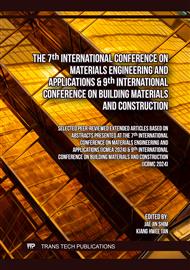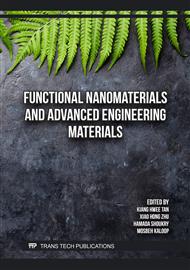p.9
p.15
p.23
p.29
p.39
p.45
p.53
p.59
p.75
Evaluation of the Influence of Brick Dust and Rice Husk Ash on the Mechanical and Physical Behavior of a Geopolymeric and Eco-Efficient Concrete with Partial Cement Replacements
Abstract:
The present research work addresses the issue of development of geopolymers as an alternative to ordinary Portland cement. For which, descriptions of the materials and instruments used for the necessary tests were made. Also, the experimental methodology for the design of geopolymeric concrete was presented, in which the production process of the precursor material and the activating agent is explained. The dosages and how the four types of mixtures to be tested are composed are shown: the standard concrete (CP) and three mixtures with different replacement variables (M1, M2 and M3). In order to study the behavior and influence of brick dust, a mixture was designed with different dosages to replace the cement with the precursor in 80%, 90% and 95% alkalized by sodium hydroxide (NaOH) 12 M and rice husk ash (RHA) with a proportion of 75% - 25%, respectively. The results show that the master concrete cores presented average resistances of up to 26.52 MPa, while with a replacement of 80%, an average of 27.05 MPa was recorded, with 90% an average of 26.05 MPa and with 95%, resistances up to 22.84 MPa after 28 days of testing. These data indicate that geopolymeric concretes with partial replacement maintain acceptable physical and mechanical properties. The specific combination of replacing cement with brick dust and rice husk ash in the alkaline solution results in favorable concrete conditions. This study demonstrates the quantitative viability of using eco-efficient geopolymers with partial cement replacements, offering a more sustainable alternative in construction.
Info:
Periodical:
Pages:
39-44
Citation:
Online since:
July 2024
Price:
Сopyright:
© 2024 Trans Tech Publications Ltd. All Rights Reserved
Share:
Citation:



